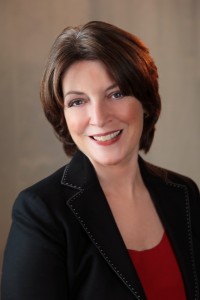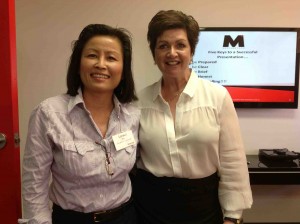Kenny Research Institute
This is Kenzo (but his friends called him Kenny) our faithful, humorous and highly intelligent Akita. He came to us as an 8 week old pup and settled in as though he was always meant to be part of the family.



Last month and with heavy hearts we had to let him go after spending 10 years and 8 months with us. It was devastating to say the least.
My previous career path required long hours, dedication and focus that meant spending less time with Kenny than I liked. It was not possible to have him at work with me as doggie crèches are not known to exist within my employer’s workplace.
It pretty well sucked as this was not an ideal arrangement if an organization wants the best out of their people.
I then thought about so many of my female colleagues, married with young children who are also pursuing a career in science. So many women in the workforce especially in science are faced with the stark choices of having to return to work soon after having their children in order to salvage their careers in what is a highly competitive industry.
Not withstanding the fact that in science the term “job security” is an oxymoron, there are still many women who are passionate about what they do and are willing to stick their necks out.
The predicament I faced has led me to my vision of building the Kenny Research Institute aimed specifically at supporting women in science. In doing so, Australia will not lose a highly educated and talented workforce that is vital to staying prosperous and relevant as a nation. (Take that onboard, politicians of ALL persuasions when you are considering cutting the budget to science and education).
In any endeavor there are good reasons and then there are the real (“selfish”) reasons. Do not for a moment think I am driven only by lofty, altruistic and philanthropic ambitions; in part I am also doing for my personal satisfaction.
The 7 foundation pillars of the Kenny Research Institute
- Bright and talented postdoctoral fellows will have a guaranteed 5 year salary (virtually unheard of) and a research assistant to pursue their particular specialized research niche. It allows them time to develop their area of expertise instead of chasing short term grants. That is counter productive as it takes their time and energy away from the main game
- Each postdoc will be matched with a mentor. The mentor is there to help them navigate through the politics that exist within any industry and temper any naivety about how the real world works
- Participation in personal development courses is compulsory; this includes being taught emotional intelligence enhancement skills. Gee, I wish I was taught that at school, how about you?
- Attendance in financial literacy courses is mandatory. Financial literacy equals financial freedom
- The Kenny Research Institute will be equipped with a human crèche, infirmary and a pet crèche. Happy mothers who can have regular contact with their human or fur kids are more likely to be focused and productive
- A 24 hour gym on site to cater to the irregular hours worked Notice the emphasis on health and wellness?
- A 24 hour cafeteria onsite that serves healthy meals. Junk food and soft drinks will not be available from the vending machines. If they want to eat crap they have to go elsewhere to forage for it. Good luck!
This is my promise to you Kenzo; RIP 25 June 2003- 24 February 2014
Career Breaks For Women Have Benefits Despite The Challenges-Smart Company
As women juggling careers and family, there is always the nagging feeling that taking extended time out to raise children is seen as a clunker of a road block to any meaningful advancement.
Well it appears that this is not as detrimental as we all have been lead to believe. The Smart Company article below reports that there are upsides; however be realistic and philosophical enough to know that it requires time to get back into the groove.
“Australian business women have revealed that an extended break from work does not always have a negative impact on their future career.
A survey of 115 state and territory finalists of the 2013 Telstra Business Women’s Awards found that over half, 55%, said that taking time out could be positive. They reported that it enables time to reassess life goals and career goals, while 87% agreed that taking parental leave could be a catalyst for launching their own business.
The survey found that 36% said a career break lead them to try something different to their usual profession. These career breaks may be taken for maternity leave, study leave, extended travel or other personal reasons. However, despite some of the positive potential of career breaks, the survey found that old issues remain prevalent.
It found 89% of respondents say women face challenges when returning to work after a career break. Forty per cent of women find it difficult to return to the workforce at the same level as they were at before the break, while 33% believed career break impacts negatively on wealth creation.
Manager of marine environment salvage and intervention at the Australian Maritime Safety Authority, and the 2012 ACT Telstra Young Business Women’s Award winner Jocelyn Parsons once took a career break after eight years in the Navy.
She told SmartCompany this morning it was the first time she’d had the chance to step outside of the Navy environment and explore new things. She spent two years in the UK with her spouse.
“It was a positive for me, I had joined the Navy at 17 years old, and wanted to look for experience elsewhere,” she says.
While it proved a positive opportunity for Parsons, she is aware that many businesses still view letting someone take leave for personal growth, whether it be male or female, as a risk.
“Most employers will see it as a loss… they’ve got to make a business decision to take the hit,” she says.
However, Parsons says if employers and employees can work collaboratively, it can be a huge benefit to the company when the employee returns, armed with new skills and life experience.
She says both females and males find it challenging returning to work after a break, as the company may have progressed and it takes effort to get up to date.
“It requires support and respect… but businesses should recognise the positives,” she says.
For business owners, the challenge of taking a career break of their own can be more about how to keep operations running smoothly when they are not there.
The managing director of Carman’s Fine Foods, Carolyn Creswell, who won the 2012 Telstra Australian Business Woman of the Year award, doesn’t think women should avoid a necessary career break if well planned. She said if female business owners leave behind a good team, a break can happen smoothly.
“It’s amazing how dispensable you are,” she said. “When you have great people at work, the business just keeps going.”
The survey was undertaken in the lead-up to the national finals of the Telstra Business Women’s Awards in Melbourne on November 14.
The findings come as a group of executive search firms have announced their commitment to a voluntary code of practice to improve women’s participation in business.
The voluntary code has seven key principals of best practice to assist in improving gender balance in senior teams. It covers the lifecycle of an executive search campaign, including assisting clients with diversity protocols, to identifying female candidates, and induction.
The businesses committed to the code include Egon Zehnder, Heidrick & Struggles, Korn/Ferry, Russell Reynolds and Spencer Stuart.
The code falls in line with Business Council of Australia’s push to improve the recruitment and promotional opportunities for women in senior roles.
Beverly Flaxington: Self talk for a calmer you-Learn how to use positive self talk to control anxiety and live a happier more relaxed life
Let’s be honest about it, we all experience feelings of anxiety from time to time. It may be for a couple of seconds during the day or it may weigh heavily on our minds and souls imprisoning us in an invisible cage that sucks the joy out of our lives. Suffice to say it comes with the territory i.e., it’s a given that as long as we have a pulse, we are not immune to the odd stab of those feelings.
In an ideal world we would recognize what we are feeling and take the proactive steps of surrounding ourselves with supportive friends and have time to exercise, eat well etc. to counterbalance the pesky feelings of anxiety.
However, there are times when we feel that we are drowning under this massive wave of helplessness that undermines all that we consider as positives in our lives.
Beverly Flaxington Interview Part1 1 Oct 2013
Beverly Flaxington Interview Part 2 1 Oct 2013
Overwhelming anxiety can kill careers, relationships and businesses; chronic anxiety is debilitating. But it does not have to be this way as Beverly Flaxington author of “Self talk for a calmer you-Learn how to use positive self talk to control anxiety and live a happier more relaxed life” explains. Beverly states that “Anxiety can take control of your mind and body — if you let it. You have the power to turn negative situations into positive ones with your self”.
Beverly who is an award winning author and Certified Professional Behavioral Analyst (CPBA), hypnotherapist, and career and business adviser discusses strategies to tame that anxiety and has shared her powerful action steps here.
100 Women of Influence Award
It’s about time that women stepped forward from the shadows and claim the credit due for their innovation, creativity, money smarts. That’s just for starters.
Corporate support (Westpac Bank and Australian Financial Review http://www.westpac.com.au/about-westpac/media-releases/media-releases/2013/5-july) has made it possible for us to recognize the contributions women make to the lives of people around them.
If you know of someone who should be publicly acknowledged please nominate them.
Full article below:
Recognising female leaders across Australia
Nominations are now open for The Australian Financial Review and Westpac’s 100 Women of Influence awards. In its second year, the awards are dedicated to recognising and celebrating female leaders across Australia.
Westpac Group Chief Executive Officer, Gail Kelly and Financial Review Group Chief Executive Officer and Publisher, Brett Clegg were joined by female nominees from last year’s program to officially launch the 2013 awards at an event in Sydney this morning. The launch marked the call for nationwide nominations to unearth Australia’s inspiring women across a range of industries who work tirelessly to help shape a vibrant and inclusive future for all Australians.
At the launch of the awards, Mrs Kelly said, “Westpac is proud to continue its support of the 100 Women of Influence awards. It’s an important way to acknowledge the significant contribution that women are making to achieve change in their local communities, businesses and society more generally.
“Westpac has a long and proud history of making a positive difference for women as part of our aspiration to be one of the world’s great companies for diversity and flexibility. These awards are a wonderful opportunity to celebrate the success and achievements of women across Australia and we look forward to starting the search again this year.”
Financial Review Group CEO and Publisher, Brett Clegg said, “Being involved at the inception of this initiative has been a great source of pride personally and for the Financial Review. This is an incredibly impactful and powerful awards program and there’s no better partner from our perspective than Gail and the Westpac team.
“Westpac and AFR want to acknowledge and take pride in powerful female leaders across all aspects of our society.”
The 100 Women of Influence awards are open for the general public to nominate outstanding and influential women across corporate, community, arts, philanthropy, public and not-for-profit sectors, as an opportunity to celebrate the skills of women in this country who achieve outstanding results in their fields.
Nominations are open across ten categories including: Board / Management, Public Policy, Young Leader, Social Enterprise and Not-for-profit, Philanthropy, Global Influence, Innovation, Local / Regional Community, Diversity and Business Entrepreneur.
Entries will be assessed by a panel of esteemed judges, which will be announced in the coming weeks.
The overall 2012 Woman of Influence winner, Social Enterprise winner and CEO of Foundation for Young Australians Jan Owen, said “Winning the awards really put my business in the spotlight, and the past year has been one of significant growth and learning.
“Women tend to generally be very humble and not see the importance of the work they are doing, and that is part of what makes these awards so powerful. I encourage you to nominate the women you see as role models so they can see the positive impact their work is having locally, nationally and internationally.”
Nominations to the 2013 100 Women of Influence awards are open this Monday 8th July and close on Sunday, 18th August. Entries can be submitted online at www.afr.com/100women.
The program culminates in an awards presentation event where winners will be announced from the 100 finalists, in Sydney on Thursday, 17 October 2013.
For further information please visit: www.afr.com/100women
Notes to Editors
100 Women of Influence Awards Categories:
- Board/Management
- Public Policy
- Diversity
- Business Entrepreneur
- Young Leader
- Global
- Local/Regional
- Innovation
- Philanthropy
- Social Enterprise and Not-for-profit
Entry and Judging Criteria
Candidates will be judged on their demonstrated vision, leadership, innovation and action in and beyond their field; their impact and how it was achieved.
The judging panel will give consideration to:
- Personal, academic, professional and community achievements.
- Demonstrated performance in their field.
- Demonstration of collaboration within and beyond their field, and a wider circle of influence than their direct role.
- How their influence has contributed to women’s social and economic advancement.
- Involvement and contribution to Australian communities through collaboration and mentoring.
- Extent to which their contribution was achieved in new and creative ways.
Key Dates and how to enter
- Entries open – Monday 8 July 2013
- Entries close – Sunday 18 August 2013
- Finalists announced in The Australian Financial Review on Thursday 17 October 2013
- Entry forms can be downloaded at www.afr.com/100women
- Completed entries can be uploaded online at www.afr.com./100women
- For more information about the 2013 100 Women of Influence Awards, please visit www.afr.com/100women
- Winners announced – Thursday 17 October 2013 at a gala event in Sydney.
Women in the Workforce and Domestic Violence
I applaud the National Australia Bank for recognizing and publically acknowledging this sad fact that some of their employees may be survivors of domestic violence. And no, I do not bank with them or receive any monies or stocks for posting this article.
(Note: I have deliberately used the term “survivors” and not “victims”. Victims feel they are not in control of their lives whereas survivors constantly look for a solution and do not allow “stuff” that happens to them to seal their fate).
Their proactive response in addressing this issue speaks volumes of their support for their staff.
No person should have to endure this type of abuse and the NAB is streets in front of just about any other corporate organization in supporting their staff by offering paid domestic violence leave.
Their aim to allow their staff an opportunity to get themselves sorted even if an initial start means they have the time and money to fi nd alternative accommodation to get out of a destructive relationship.
nd alternative accommodation to get out of a destructive relationship.
Well done, NAB.
“National Australia Bank will offer its 43,000 staff paid domestic violence leave in a move that campaigners hope will encourage other large private employers to follow suit.
Fairfax said the policy would make NAB the largest private-sector employer to offer the entitlement, which gives staff unlimited leave if needed.
“Some people just need a couple of days or a short period of time and others need more extended time out of the workforce or sporadic time out of the workforce to deal with the challenges,” said NAB general manager of workplace performance, Lynda Dean.
She said the policy would apply to all staff.
Fairfax said more than a million workers, mainly in the public sector, had access to some form of paid domestic violence leave.
Ludo McFerran, national manager of the Safe at Home, Safe at Work project, said the bank’s move was “fantastic” and was significant coming from such a big employer.
The economic freedom from remaining in paid work is regarded as vital in helping victims escape violent relationships.”
Executive Women on Wall Street: Oh Sisters Where Art Thou
In reading Steven M. Davidoff’s article entitled “Why So Few Women Reach the Executive Rank” (http://dealbook.nytimes.com/2013/04/02/why-so-few-women-reach-the-executive-rank), I was not surprised when he cited the 3 main reasons for the dearth of women in the upper echelons of many an esteemed financial institution.
At first it may seem like grim reading but I cannot help but feel that the tide is turning and the once male dominated field of high finance will have to be more accommodating in the very near future. Move over, fellas.
Main excerpt below:
“The first explanation is simple sex discrimination. Women entering the work force are met with overt hostility. In some cases, benevolent attitudes have been found to be patronizing and can do as much harm as outright discrimination.
More generally, hostility is not required for discrimination to exist. In other words, stereotypes can end up creating different or lower expectations for women in the absence of hostility. And another strand of literature argues that there is not hostility toward women so much as a preference for men.
Evidence for each of these explanations can be found in the repeated studies that have concluded that women on Wall Street and in corporate America are paid less than men for similar work.
The second explanation is more complex, and states that the current male-driven culture does not allow women to succeed. Women’s values and approaches are different, and when entering the work force women find that the male culture is not to their taste or are driven off. Those women who do succeed adapt to the male culture. In other words, women need to become like men to become corporate executives.
Another issue at the forefront involves child care. In large part, women still effectively function as the primary caretakers of their children, and many commentators have described the struggle for “work-life balance.” This is true because the need to care for children is often greatest when women are in their 30s and 40s, a period that is the prime time of their careers.
Demographic changes, however, may help change the equation. The median age of a chief executive of an S.& P. 500 company is 55, while the average age of a director is 62. As more women enter the work force they will gradually come to parity and perhaps even take over.
It is here where we arrive at the thesis put forth by Facebook’s chief operating officer, Sheryl Sandberg. In her new book, “Lean In,” she seems to side with the explanation that a male-driven culture is at the root of the problem. Ms. Sandberg urges women to lean in and become as assertive as men in pushing forward their careers.
Her chief foil these days is Anne-Marie Slaughter, a professor at Princeton who left a high-powered post in the State Department. Professor Slaughter’s main concerns are the notion that the needs of women, child care and time with children are not being accommodated by the workplace.
Ms. Sandberg and Professor Slaughter are not the only ones examining the issue of women leaders. Other authors and commentators have joined the debate with books like “Nice Girls Don’t Get the Corner Office” and “The Feminine Mistake: Are We Giving Up Too Much?”
But the question boils down to how to address this imbalance in the number of women in leadership positions in corporate America and on Wall Street. Do we address overt discrimination with affirmative action or quotas as Europe has? Or is the answer to open space for women to spend time with their children and have career breaks? Or do women really have to become like men to succeed? And, again, the response differs, depending on what you see as the cause of the problem.
For advocates of sex equality, there is reason for optimism. The rising numbers of women in the workplace will inevitably continue to chip away at the disadvantages that women face. And if women really do en masse change cultures and bring separate characteristics to bear, it could transform the way that Wall Street does business.
But it is clear that given today’s low numbers, Wall Street has its work cut out for it.”
Early Career Choices: What Would You Have Done Differently?
I had the good fortune to attend an Advantage SA Speakers in Schools training this week.
The topic: How to engage secondary school students when speaking about potential career paths
The inimitable and popular media identity Leigh McClusky (McClusky & Co) well known as the former host of Channel 7 Adelaide’s Today Tonight facilitated this training workshop. Leigh shared valuable tips and insights that I will integrate into future chats/chinwags with the kids. Notice the informality and use of vernacular in the second half of the preceding statement?
That was my first take away from the training and a great reminder that I am no longer presenting my latest research at a medical science conference (the unspoken is that I am ready to defend my hypothesis based on my water tight statistical analyses) but to connect heart to heart, human to human.
This point was brought home when Leigh got all the participants to write a letter to the 16 year old version of ourselves given what we now know. Ah, the benefits of hindsight.
Dear 16 Year Old Me,
I would encourage you to spend more of your time understanding that being comfortable in your own skin is the secret to a successful and happy life.
I would have you not spend all your free time doing physics, chemistry, double maths homework because your identity then was predicated on academic achievement.
That you would twig that this approval by achievement syndrome that got inculcated in your psyche is based on an archaic education system deliberately designed to produce hard working, compliant albeit financially illiterate drones.
Do not let what you do define who you really are.
I would have you go on a journey of self discovery, and to understand that the essence of you is perfection; your indestructible spirit is pure beauty. That you learn from your attempts at doing and that there is no shame in not hitting your target.
Failure is over rated and a label used by some people who would rather see you not succeed. Their irrational thinking is that if you do well, it means they have to get off their bums and do something productive with their lives too. Go figure. Do not get upset but feel compassion for them.
Finally, I would have you look yourself in the eye everyday and say aloud “I am enough”.
Much affection,
Present day Me.
Beverly Flaxington: Seven Steps to Hiring and Retaining the Right Person
An organization will only function like a well oiled machine when we have the right people for the right jobs. Sounds logical but the stats don’t lie. According to the Dept of Labor, 50 percent of all employees leave their job within the first six months of being hired. 
And in a recent survey by Right Management 86 percent of employees polled said they plan to actively look for a new position in 2013 (http://www.right.com/news-and-events/press-releases/2012-press-releases/item24318.aspx).
To say that the correct candidate selection process for a specific role is crucial is an understatement. So why does the recruitment process go so wrong sometimes.
Beverly Flaxington a Certified Professional Behavioral Analyst (CPBA), hypnotherapist, and career and business adviser explains in her latest best seller Make Your SHIFT: The Five Most Powerful Moves You Can Make to Get Where YOU Want to Go how to get it right so that it doesn’t end in tears but instead increases the bottom line.
Beverly Flaxington Interview Part1 5Feb2013
Beverly Flaxington Interview Part2 5Feb2013
In this short excerpt Beverly shares a tip on how to deal with a difficult boss!
Find Beverly at http://www.
Dina Proctor: Madly Chasing Peace: How I Went From Hell to Happy in Nine Minutes a Day
It is when we make time to be still will we meet the best version of ourselves; this version we long for is calm, happy, generous, compassionate, highly productive, wealthy and healthy.
Question: How do we then get to and stay in this state (of grace) when in the busy lives we lead we are continually bombarded with external stimuli, demands and deadlines coming at us from every angle leaving us no time to just be.
Answer: By meditating.
This is not a trite answer to some of your most pressing concerns; if you think I am suggesting you go sit under a tree and contemplate your navel or the meaning of life.
For Dina Proctor finding that inner core of peace that turned her life around isn’t hard work as she explains in her best-selling book “Madly Chasing Peace: How I Went From Hell to Happy in Nine Minutes a Day”. She went from hitting an emotional rock bottom through struggling with addictions, food issues and depression, to finding a consistent happiness by (get this) meditating for 3 minutes 3 times a day.
Surely, if you value your health, sanity and well being, adopting this practice is an investment in time that will be repaid a thousand fold.
Just do it!
Find Dina at www.dinaproctor.com
Dorinda Hafner Interview: Honey, I Shrunk The Chef
Dorinda Hafner is a remarkable human being whose career evolution can be summed up as “diverse” which as you read and listen to this interview is an understatement. Leaving Ghana at 18 and bound for the United Kingdom as a trainee nurse, she made stops along the way as a model, dispensing optician, actor, and is best known in Australia as a celebrity chef, civil celebrant and author of her latest book Honey, I Shrunk The Chef. 
At 65 and still going like the clappers, she is testament to the fact that you change careers not just once but many times and at this rate I would not be surprised to see her doing something else in the coming years.
As Dorinda so succinctly puts it, “We are all multi talented beings, and it is only when we nurture and grow these talents that our magnificence shines”. I got a sense of fun and enthusiasm and most importantly passion and authenticity. To me that is a sign of someone honoring her talents.
The original intent of this interview was to discuss her newly published book, but as we talked what unfolded was a chronicle of one woman’s rich and varied life as told through her book. Yep, it included all the triumphs and setbacks and what led to overeating as a means of compensating for perceived shortcomings.
I don’t know about you, but I like happy endings; Dorinda shares how she shed 80 kg (over 160 pounds!) by firstly being internally motivated to continue living a vibrant healthy life. The subsequent external actions she took included getting a (good looking) personal trainer, reassessing her eating habits, understanding and modifying the internal dialogue which lead to overeating.
I am not in the habit of endorsing cookbooks but Honey, I Shrunk The Chef is about self respect and shoring up self esteem by literally nurturing our bodies with good food simply because we have discovered we are lovable as we are.
Some of the topics covered:
Fending for myself-The emotional and psychological management of a food addict; Public image-Dorinda talks about how weight loss changed her relationships with friends, family and others; Exercise Issues-Dorinda’s road to making friends with regular exercise and how it affected her progress; Portion Adjustments-Fun ways to permanent portion control.
Get the book at http://www.honeyishrunkthechef.com
